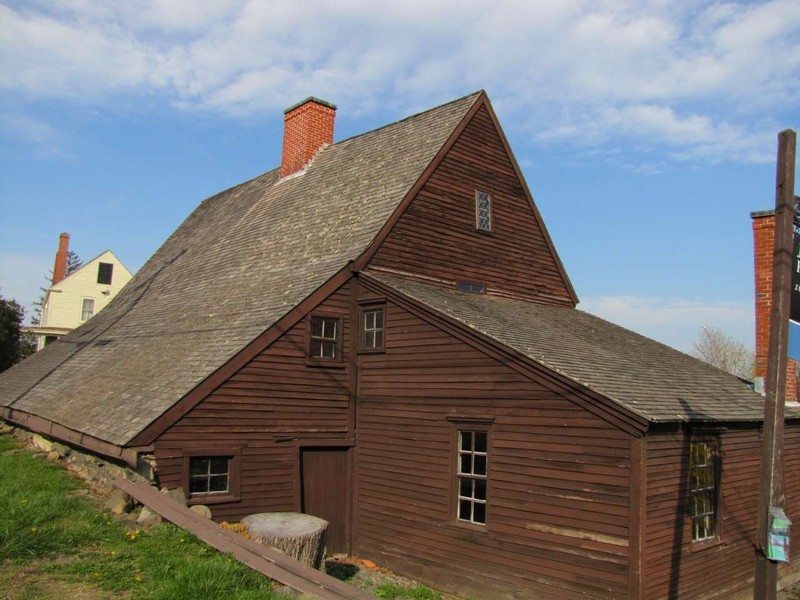Richard Jackson House
Introduction
Text-to-speech Audio
Images
The front of the Richard Jackson House. The center section was constructed in 1664, while the editions on either end were added later.

The lean-to addition, which is actually the rear of the house, faces Northwest Road.

The Jackson House's "hall," or kitchen with its massive, walk-in hearth.

The Richard Jackson House prior to restoration.

The house as it looked in 1900, when Northwest Road was nothing more than a dirt track.

Backstory and Context
Text-to-speech Audio
The son of an immigrant cooper, Richard Jackson built the original, center section of the house in 1664 on his 25-acre farm. This two-story, four room home with a large central chimney, was built with standard post-Medieval framing, to include a ground sill, two-story posts, chimney girts, and summer beam topped with a steep gabled roof. Inside, Jackson laid broad oak planks on the floor and covered the walls with thick plaster while leaving many of the ceiling beams and vertical planks exposed. And since waterways were the primary means of transportation, the house fronts North Mill Pond rather than Northwest Road.
Prior to his death in 1718, Jackson built the lean-to addition to the rear of his home, which brought its roof almost to ground level, in 1715. In 1727, the house and land were divided between his daughter-in-law and her children. A tax bill dated the same year, reveals that there were 12 men above the age of 16 living in the house, which does not include women and children. From 1727 until 1897, the home was owned by five generations of Jacksons all named Nathaniel. During this time, the Nathaniels shared the house with various members of their extended families and, understandably, built an addition to its east side prior to 1769, known as the “shop” and another addition was added to the west side in the early 19th century.
Nathaniel V’s daughter, Mary Jackson Brown, and her son (also named Nathaniel) inherited the home in 1897 and eventually rented it to an African-American couple, Clarence and Isabelle Tilley. It is thought that Isabelle was born into slavery and escaped to New Hampshire via the Underground Railroad. William Sumner Appleton, founder of the Society for the Preservation of New England Antiquities (1910), now known as Historic New England, first visited the house as a college freshman in 1893 and again in 1913. Finally, in 1924, he approached Mary Jackson Brown about purchasing the house and she consented so long as Isabelle retained life residency rights, which were granted.
Appleton and his organization, then restored the home, leaving each addition to how it would have looked when constructed. In other words, they did not restore the entire house to 1664 status. The most dramatic change Appleton undertook was to add leaded diamond-paned windows. Today, the Richard Jackson house is open for tours and hosts various special events, such as its Edgar Allen Poe: Graveside Tales. Please visit their website or call Historic New England for tour and event dates and times.
Sources
Dillon, James. "National Register of Historic Places Nomination Form." United States Department of the Interior/National Park Service. March 11, 1975. Accessed May 7, 2019. https://npgallery.nps.gov/NRHP/GetAsset/NHLS/68000009_text
"Jackson House (C.1664): visit the oldest house in New England." Historic New England. Accessed May 7, 2019. https://www.historicnewengland.org/property/jackson-house/
Campbell, Ron. "Richard Jackson House." Walk Portsmouth. July 24, 2014. Accessed May 7, 2019. http://walkportsmouth.blogspot.com/2014/07/richard-jackson-house.html
